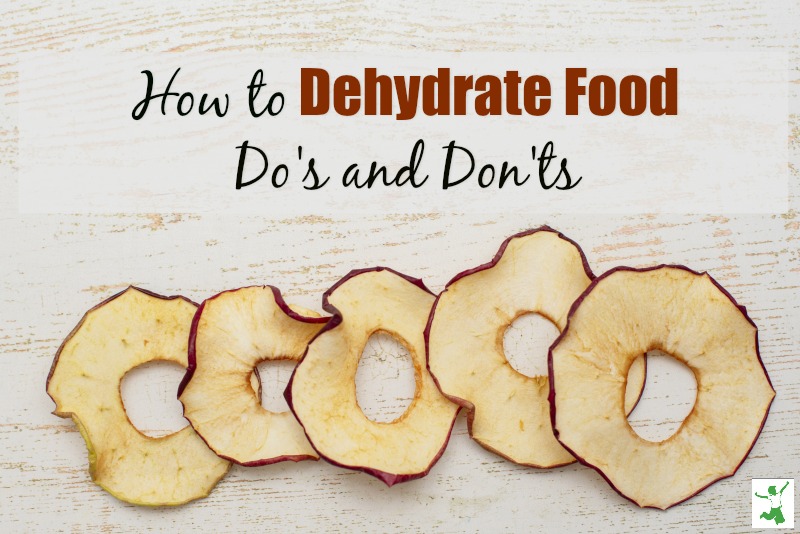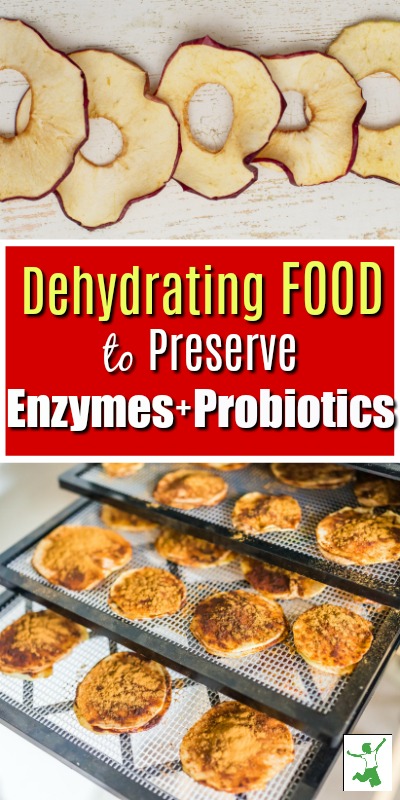Table of Contents[Hide][Show]
How to dehydrate food either in a dehydrator or a warm oven without losing precious enzymes and probiotics to ensure that as much nutrition as possible is retained.
A number of people from around the world who are in a quarantine situation due to the novel coronavirus have emailed me recently to inquire about dehydrating food.
Does the process of dehydration cause enzyme loss or destroy probiotics?
Did traditional societies dry out food for later consumption?
Do you need a dehydrator to do the job or is a warm oven sufficient?
Dehydrating Food is a Traditional Practice
The great news is that the practice of drying out food for later consumption is very much in accordance with the wise ancestral preparation methods.
For example, the Aztecs relied heavily on seeds as a staple food.
Preparation involved a careful soak of the seeds in brine water followed by drying them out in the sun. The seeds were then consumed whole or ground into meal for baking after the drying process was complete. (1)
This recipe for dehydrated pumpkin seeds mimics this practice.
Wet versus Dry Heat
One point of confusion is the temperature at which food enzymes and probiotics are destroyed in raw foods.
It’s important to understand that there is a big difference between wet and dry heat.
For example, the highest air temperature ever recorded was 134.1 F (56.7 C) in Furnace Creek Ranch, California. (2)
While very uncomfortable, such high temperatures will not kill us as long as we have plenty of water and shade.
However, a liquid temperature of only 118 °F/48 °C is deadly to both plants and animals.
Interestingly, if you stick your finger into a cup of water that is only 117 °F/47 °C, you will NOT burn yourself.
It is that single degree of difference that determines whether you are burned or not.
In short, life withstands dry heat much better than wet heat. This goes for food enzymes and probiotics as well.
According to food scientist Dr. Mary Enig:
All enzymes are deactivated at a wet-heat temperature of 118 degrees Fahrenheit, and a dry-heat temperature of about 150 degrees [66 °C].
It is one of those happy designs of nature that foods and liquids at 117 degrees [47 °C] can be touched without pain, but liquids over 118 degrees [48 °C] will burn. Thus we have a built-in mechanism for determining whether or not the food we are eating still contains its enzyme content. (3)

Still Unconvinced?
So, if you are dehydrating food, as long as the temperature is below 150 °F/66 °C, the enzymes and probiotics will be preserved.
If you are still unconvinced, dry out a batch of soaked nuts in a 150 °F/66 °C oven and then eat a handful straight out of the oven!
You will be delighted to see that the nuts are not hot and that you do not burn your hand or mouth, an indication that the food enzymes are indeed preserved.
Warm Oven versus a Dehydrator
The question is, should you use an oven to dehydrate your foods or is it worth it to invest in a dehydrator?
In my view, the choice ultimately comes down to what types of foods you plan to dry out.
Warm ovens work great for dehydrating soaked nuts and seeds. It also is a good choice for making jerky.
For more delicate foods such as fruits and vegetables, however, I would suggest investing in a dehydrator that can be set to a lower temperature.
With regard to the many models out there, I suggest buying a stainless steel dehydrator. These models are not only hardier, but they are also safer to use than cheaper models with plastic trays which risk microplastics exposure.
If you’ve already invested in a dehydrator with plastic trays, be sure to cover each tray in unbleached, uncoated parchment paper so that the food doesn’t contact the plastic during the drying process.
This ensures that no microplastic or leached chemicals end up in your dehydrated food!
References
(1) Nourishing Traditions Cookbook
(2) Highest temperature ever recorded
(3) Enzymes by Dr. Mary Enig








Could I use butcher paper? The link you gave takes me to a page for a paper that says is non stick. Does not say it is not coated.
I haven’t used butcher paper myself for this purpose, but it should be fine.
Can I safely dehydrate celery at low temperature without blanching it first? I don’t care about preserving the color.
My goal is to preserve the enzymes and chemicals without ‘killing the enzymes’ or altering the nature of the sodium content. Will it be safe to consume after rehydration?
I have a dehydrator that goes to low temperatures, and I live in the desert. This time of year our relative humidity hovers between 10-15%.
The dehydrator you link to is not available. Any other brand you recommend?
Thanks for letting me know it was out of stock! Here’s another good one to consider. https://amzn.to/3iKwsTX
Can I get regular, non grass fed jerkey meat, powder it, mix with tallow, then make pemmican ? Will this keep me alive?
Thank you Sarah!
Thank you so much for mentioning not to have food come in contact with the plastic trays so we don’t get bisphenol infiltration into our food thanks again Sarah
Can you dehydrate in an air fryer?
I don’t own an air fryer, but it runs at a higher temperature than 150 F, right? If so, then no, that would not work.
I have a countertop convection oven/”air fryer”. It isn’t the best air fryer, but I love it for dehydrating. It goes down to 110 degrees, and I don’t have to get out a separate appliance when I want to dehydrate something!
Great tip! Thanks for sharing!